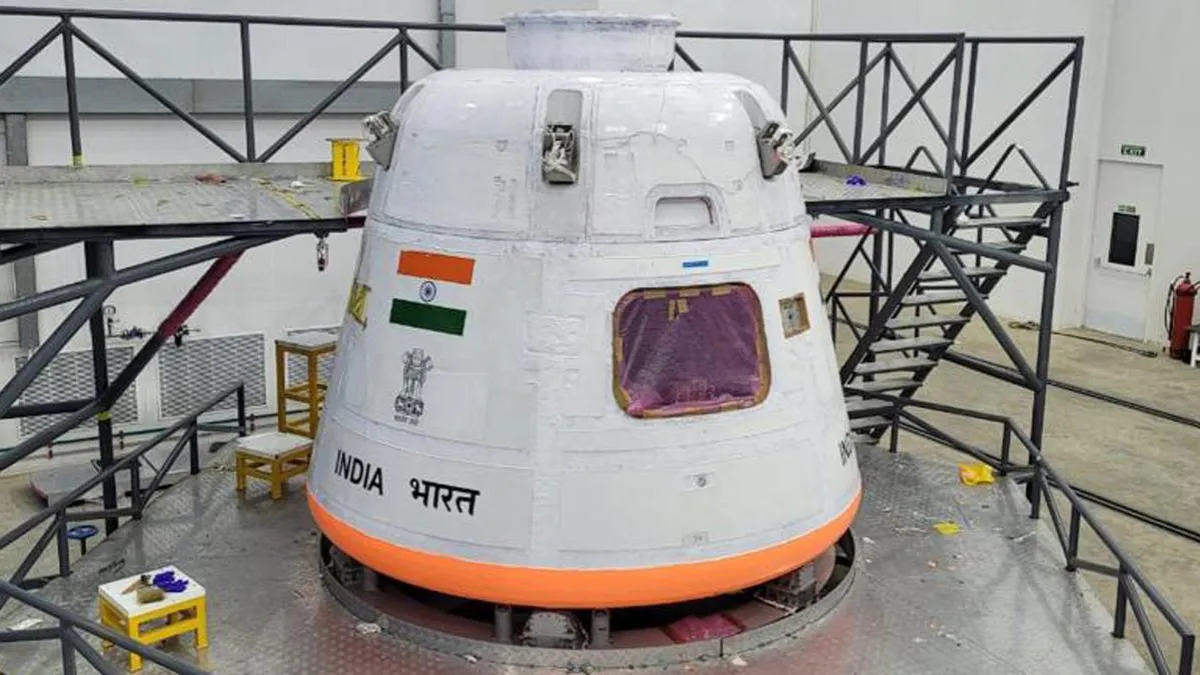ISRO has started to make preparations for the Flight Test Vehicle Abort Mission-1 - TV-D1
07 Oct 2023
News
The Indian Space Research Organisation (ISRO), which plans to begin uncrewed flight testing for the Gaganyaan mission, has begun planning for the Flight Test Vehicle Abort Mission-1 (TV-D1).
"Mission Gaganyaan: ISRO will begin unmanned flight testing for the Gaganyaan mission." "Preparations are underway for the Flight Test Vehicle Abort Mission-1 (TV-D1), which will demonstrate the performance of the Crew Escape System," the space agency announced on X (previously Twitter). Though the space agency has not set a date for the TV-D1, it is expected to launch from the Satish Dhawan Space Centre in Sriharikota (SDSC-SHAR) by the end of October 2023.
During the Gaganyaan mission, the astronauts are trapped in a pressurised earthlike atmospheric state in the Crew Module (CM), according to ISRO.
"The Gaganyaan mission's CM is in various stages of development." The CM for the TV-D1 is an unpressurised version that has finished integration and testing and is ready to be sent to the launch facility. This unpressurised CM variant must be the same size and mass as the original Gaganyaan CM. It houses all of the deceleration and recovery mechanisms. It comes with a full set of parachutes, recovery aids, actuation systems, and pyros. For navigation, sequencing, telemetry, instrumentation, and power, the avionics systems in CM are configured in a dual redundant mode. The CM in this mission is heavily instrumented to collect flight data for the purpose of evaluating the performance of several systems. "The CM will be recovered after touchdown in the Bay of Bengal by an Indian Navy dedicated vessel and diving team," ISRO stated. It also said that the TV-D1 is nearing completion.
"The Test Vehicle is a one-stage liquid rocket designed specifically for this abort mission." The payloads include the CM and Crew Escape Systems (CES), both of which include fast-acting solid motors, as well as the CM fairing (CMF) and Interface Adapters. This flight will imitate the abort condition encountered during the Gaganyaan mission's ascending trajectory at a Mach number of 1.2. At an altitude of around 17 kilometres, CES with CM will be disconnected from the Test Vehicle. Following that, the abort sequence will be completed autonomously, beginning with the separation of CES and the deployment of a succession of parachutes and concluding in the safe landing of CM in the sea, about 10 kilometres off the coast of Sriharikota," it said.
After integration, the CM completed numerous electrical tests at ISRO's Bengaluru facility, including an acoustic test, before being sent to SDSC-SHAR on August 13. It will be subjected to vibration testing and pre-integration with the CES at SDSC before being finalised for integration with the Test Vehicle at the Launch Pad. This Test Vehicle mission with this CM is an important milestone for the entire Gaganyaan projects since it integrates a nearly-complete system for a flight test. The success of this test flight will pave the way for the remaining qualification tests and unmanned flights, which would culminate in the first Gaganyaan mission with Indian astronauts.
The Gaganyaan mission seeks to show the capacity of launching humans (three crew members) into low earth orbit and safely returning them to Earth by landing them in either the Bay of Bengal or the Arabian Sea.
